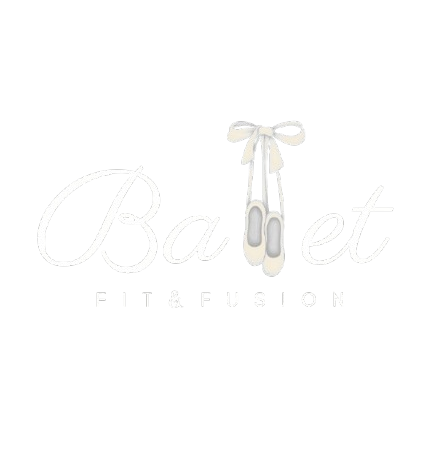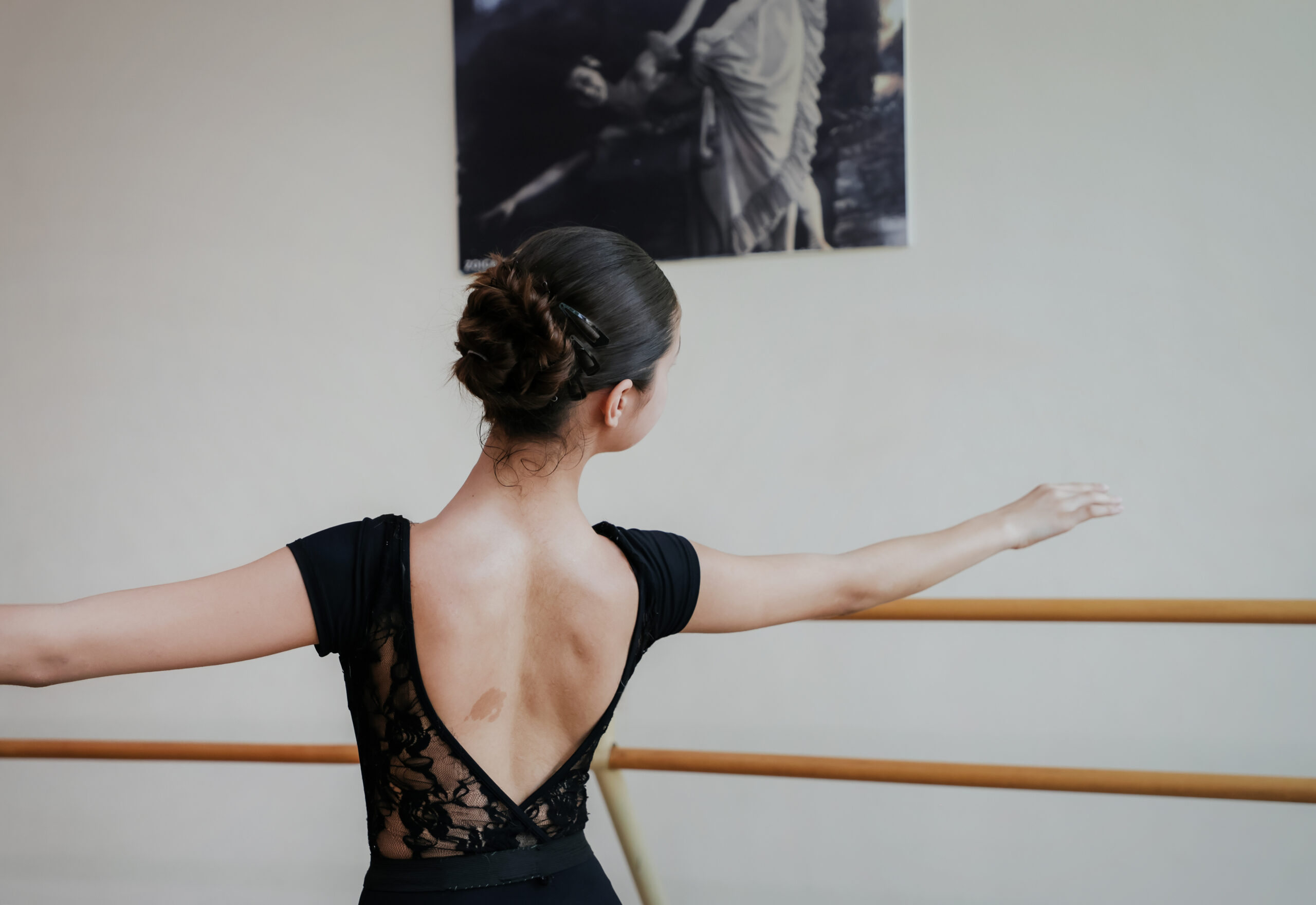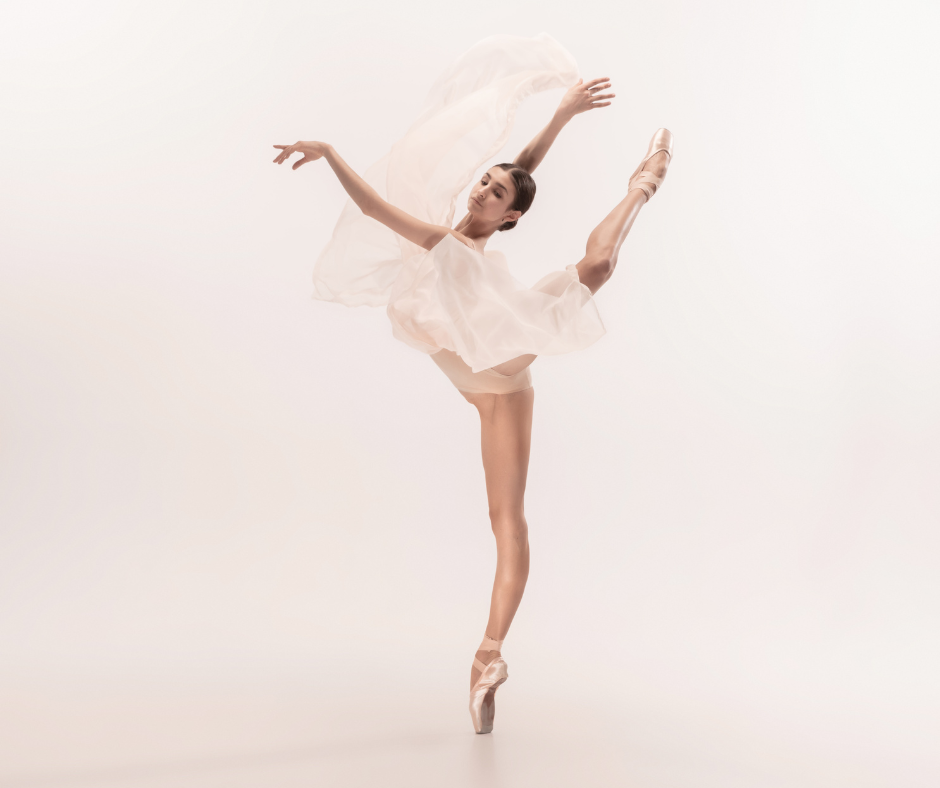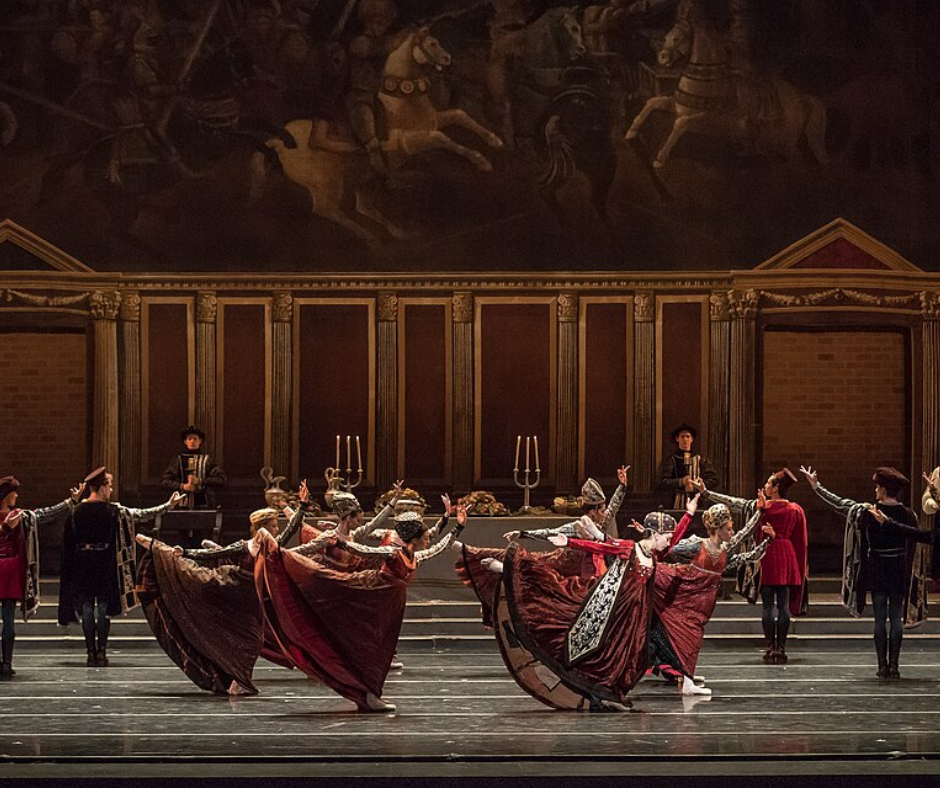Port de Bras – Telling Stories Without Words
In the original production of The Sleeping Beauty, the villain Carabosse makes her dramatic entrance during Princess Aurora’s birthday celebration. She doesn’t speak. She doesn’t even dance. And yet, she delivers a message to the royal court:
“Your daughter will grow into a beautiful woman—but one day she will prick her finger on a poisoned spindle and die.”
How does she do this—without a word? Through classical pantomime, a powerful tradition in ballet where gesture becomes language.
Watch closely:
- She points at Aurora.
- She lowers her hand to the ground, then lifts it upward—“She will grow up.”
- She outlines her face with her finger—“She will be beautiful.”
- She holds her palm out as if to say “But wait.”
- She mimes pricking her finger—“She will touch the spindle.”
- And finally, she crosses her arms in front of her chest—“She will die.”
This sequence is not just movement; it’s storytelling through the body. In classical narrative ballet, gestures and facial expressions are essential to express emotion, plot, and character without words.
But where do these expressive gestures come from?
From Ancient Statues to Royal Courts
The roots of ballet pantomime trace back to Roman statues, where gestures were frozen in time. Centuries later, Italian writer Andrea De Jorio studied the body language of everyday Neapolitans and compiled it in his influential 1832 book La Mimica. He saw gesture as a bridge between emotion and speech—a philosophy that deeply influenced the courtly etiquette and stagecraft of ballet.
During the Renaissance and Baroque periods, Italian nobility refined dance by blending it with theatrical traditions like Commedia dell’Arte, a masked form of performance. Because the actors’ faces were hidden, body language became the main vehicle for emotion. This inspired choreographers to develop stylized gestures that survive in ballet today.
Later, under the reign of King Louis XIV, ballet blossomed into a formalized French art. Louis, a devoted dancer himself, collaborated with ballet masters like Beauchamps and Feuillet to codify steps into written notation. These early manuals didn’t just outline steps; they taught the art of elegant conduct—how to tip a hat, exit gracefully, and most importantly, how to carry oneself with poise and dignity.
Why the Arms Matter: Anatomy Meets Expression
While early texts focused more on the legs and footwork, they still emphasized the logical connection between the body’s anatomy and the quality of movement.
- The knees should bend in coordination with the elbows.
- A demi plié is mirrored in the arms with a gentle fold at the elbows and wrists.
- The fingers form a delicate oval, soft and rounded—as if holding a mirror or gently brushing a gown.
Why such emphasis on the arms and hands? Because they are the most flexible and expressive parts of the body. When trained, they can convey intention, emotion, and story—all without uttering a single word.
Classical Ballet’s Gesture Vocabulary
Here are just a few iconic pantomime gestures still used today:
- To dance – rotating the hands above the head
- To go mad – spinning index fingers near the temples
- Marriage – pointing to the ring finger on the left hand
- Love – crossing the arms over the heart
- Death – crossing the wrists in front of the body
These gestures traveled across Europe—from the French court to Russia, Denmark, Germany, and beyond—fueling the Romantic era of ballet with works like La Sylphide and Giselle.
Vaganova’s Legacy: The Six Port de Bras
One of the most transformative developments in arm movement came with Agrippina Vaganova, who formalized the Six Port de Bras in her book Basic Principles of Classical Ballet.
Her method fused French elegance with Italian athleticism and became the cornerstone of ballet training worldwide. The Six Port de Bras are more than aesthetic poses—they’re a full-body practice in control, coordination, and artistry.
What Is Port de Bras?
Literally translated as “carriage of the arms,” Port de Bras refers to the fluid, intentional movement of the arms—not just static positions, but the transitions, coordination with the torso, head, and eyes.
Its beauty lies in:
- The harmony between both arms
- The soft shaping of lines
- The plasticity and flow that enhance jumps, turns, and poses
- Its ability to bring emotion and meaning into every step
The Final Gesture
Holding the arms, hands, and fingers correctly means more than beauty—it’s about storytelling. From ancient pantomime to Vaganova’s codified port de bras, ballet gives us a way to speak through motion.
Every movement becomes a message.
Every gesture, a sentence.
And every dancer, a storyteller.
References
- Homans, Jennifer. Apollo’s Angels: A History of Ballet. Random House, 2010.
- Vaganova, Agrippina. Grundlagen des klassischen Tanzes. Übersetzt von Hans Beck und Käthe Albrecht, Henschel Verlag, 2001. Ursprünglich veröffentlicht 1934.



